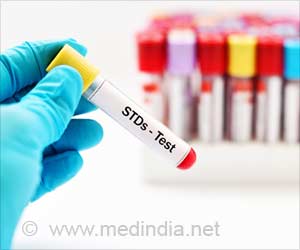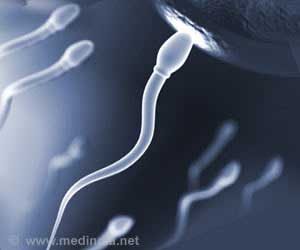many women do not have the opportunity to speak with their physicians about HPV and therefore may not learn that some HPV infections are persistent and can develop into cervical cancer
One of the most common sexually transmitted infections in US is HPV (Human Papillomaviruses) and some of its high risk types can even cause cervical cancer – Researchers gauge women's understanding of its link to cancer and their response to the new vaccine.
Despite recent advances in the detection and prevention of HPV, the link between the virus and cervical cancer is not well known to the public. In June 2006, the Food and Drug Administration (FDA) approved the first vaccine to prevent infection of two high-risk types of HPV, and two types that cause genital warts. The Advisory Committee on Immunization Practices (ACIP) recommended it for females 9 to 26 years of age.Two studies presented today at the American Association for Cancer Research's Frontiers in Cancer Prevention Research meeting in Boston assess the public's understanding of HPV and whether discussion of the vaccine by the media and public has influenced the decision to vaccinate among women at risk.
What Do U.S. Women Know About Human Papilloma Virus (HPV) and Cervical Cancer?
Many women with HPV show no symptoms of the virus, and infections often clear without need for treatment. Because of this, many women do not have the opportunity to speak with their physicians about HPV and therefore may not learn that some HPV infections are persistent and can develop into cervical cancer.
The National Cancer Institute (NCI) created the Health Information National Trends Survey (HINTS) to monitor health communications about cancer. In 2005, one high-priority research aim was to assess, for the first time, the awareness and knowledge of HPV in a nationally representative sample of women.
To identify factors associated with U.S. women's awareness of HPV and its link to cervical cancer, researchers from NCI analyzed cross-sectional data collected from more than 3,000 women aged 18 to 75 who responded to HINTS.
Advertisements
1. Only 40 percent had ever heard about HPV;
2. Among them, less than half were aware of the virus' connection to cervical cancer;
Advertisements
The public needs education about HPV and cervical cancer in order to make appropriate, evidence-based health care choices among existing prevention strategies, including the Pap test, HPV DNA test, and HPV vaccine, researchers concluded.
"Individuals are constantly being presented with new health care research that updates previous knowledge, might conflict with prior knowledge, or provides entirely new options for diagnosis and treatment," said Jasmin A. Tiro, Ph.D., MPH, in the Division of Cancer Control and Population Sciences, NCI, Bethesda, Md. "With limited awareness about HPV among women in this country, there is a need for clear, consistent information about HPV transmission, prevention, detection and the link to cervical cancer. We expect that media coverage over the past year and direct-to-consumer marketing efforts by the makers of the HPV DNA test and the HPV vaccine will increase awareness, and NCI is conducting studies to monitor this possible increase. We plan to track the diffusion of knowledge to make sure that all women have accurate knowledge about HPV and how to prevent cervical cancer."
The Effects of Information Framing on Intentions to Vaccinate Against HPV.
The success of the HPV vaccine depends largely on the public's willingness to accept vaccination. Because of the potentially controversial nature of the vaccine, researchers at the University of Pennsylvania's EPIC Center of Excellence in Cancer Communication Research assessed how its portrayal in the media would affect attitudes toward vaccination among women.
The study was a part of the Annenberg National Health Communication Survey, a monthly barometer of the public's health communication practices and needs. The survey is jointly funded by the National Cancer Institute, the Annenberg School for Communication and the Sunnylands Trust at Annenberg. It was fielded in June, 2006, roughly coinciding with FDA approval of the vaccine.
A nationally representative sample of U.S. adults over 18 was randomly assigned to read one of three paragraphs about the vaccine, each emphasizing a different point of view: the vaccine protects against cervical cancer; the vaccine protects against cervical cancer and sexually transmitted infections; or, the vaccine protects against cervical cancer, sexually transmitted infections and may or may not lead to increased sexual promiscuity among those vaccinated. The survey was then given to gauge intentions toward vaccination. It was completed by 635 adults, 49 percent of whom were women.
Researchers found:
a. More than half of respondents (56 percent) had heard of HPV and reported that they had seen or heard news or ads about HPV in the past week;
b. Although 42 percent of respondents had heard about a vaccine for HPV, 80 percent indicated never having talked to a health care provider about the virus.
How the vaccine was presented greatly affected women's intentions to vaccinate. When women read that the vaccine protects only against cervical cancer, 63 percent indicated they were "very likely" or "somewhat likely" to get vaccinated, compared to 43 percent of women who read that the vaccine protects against cervical cancer and a sexually transmitted infection.
"Despite high levels of exposure to and awareness of the newly approved HPV vaccine, intentions to vaccinate are mixed," said Amy Leader, MPH, Research Director, EPIC Center of Excellence in Cancer Communication Research. "Trends indicate that intentions are highest when the vaccine is framed to solely prevent cervical cancer and lowest when the vaccine is framed to prevent both cervical cancer and a sexually transmitted infection, or STI, indicating that people may feel the need for an STI vaccine is unnecessary."
Participants were also asked about their intentions to vaccinate if they had to pay for the vaccine or if the vaccine were provided at little or no cost. Although the majority reported having some form of health insurance coverage, intentions to vaccinate one's self or a daughter were substantially higher when the vaccine was available at little or no cost. For example, 54 percent of parents indicated that they were "very likely" or "somewhat likely" to want the vaccine for their daughter if it were provided at little or no cost, compared to 38 percent of parents who would consider the vaccine for their daughter if it would cost their family.
Source-Eurekalert
SRI





